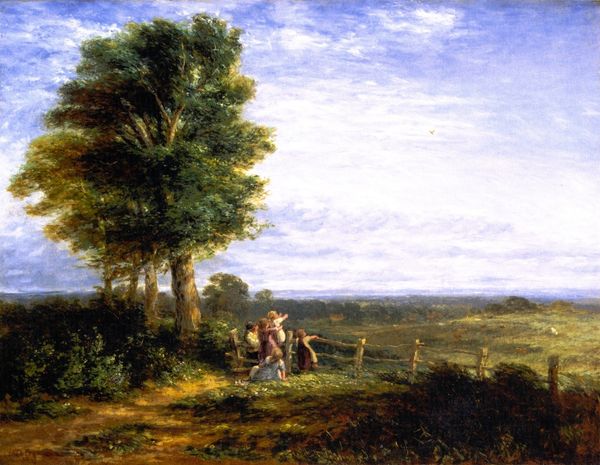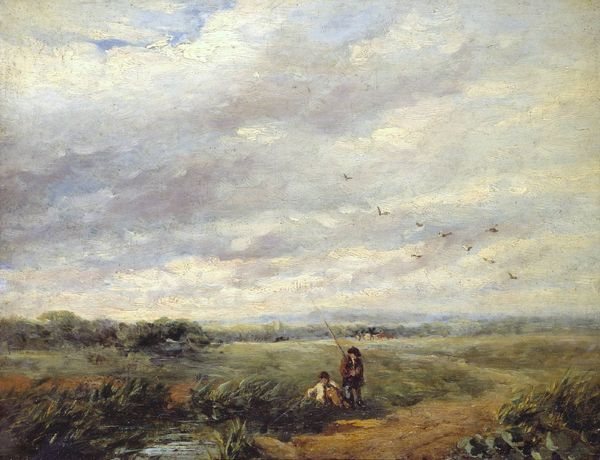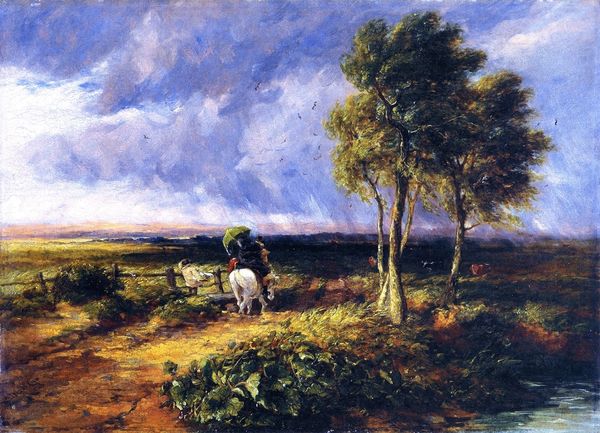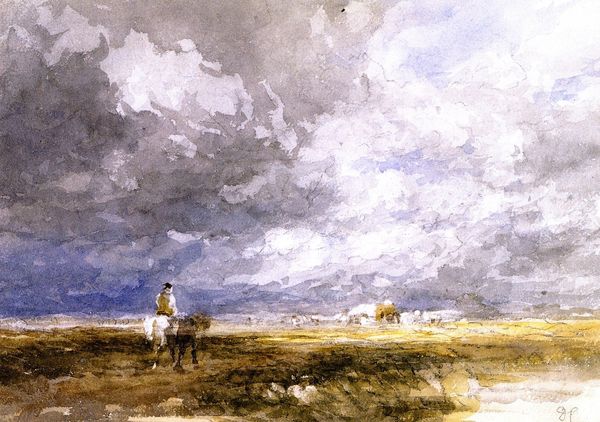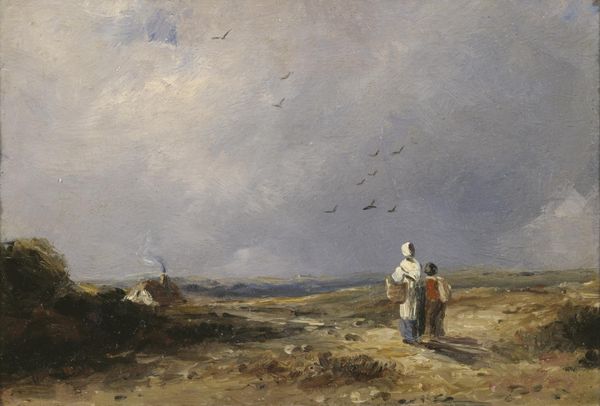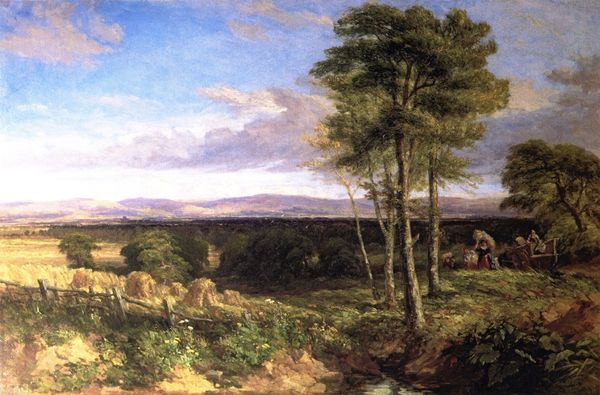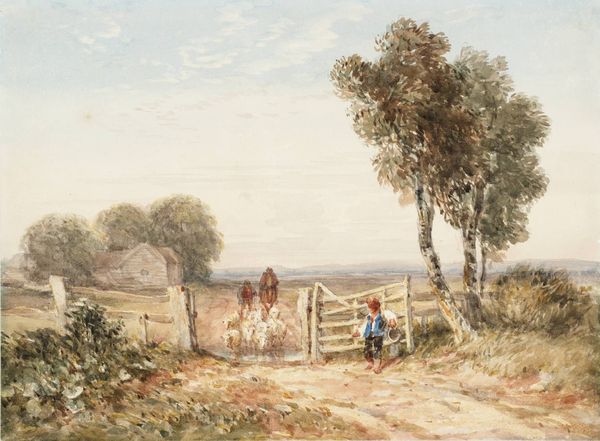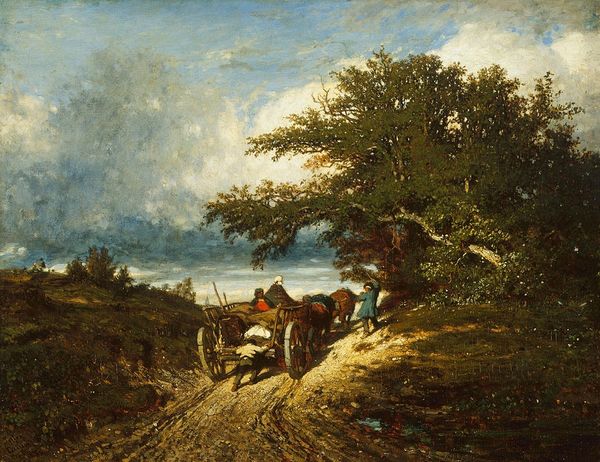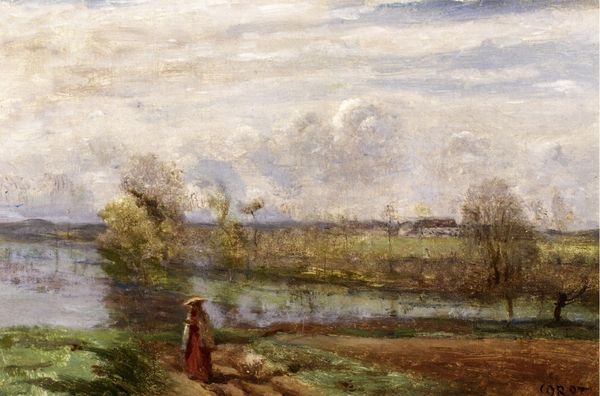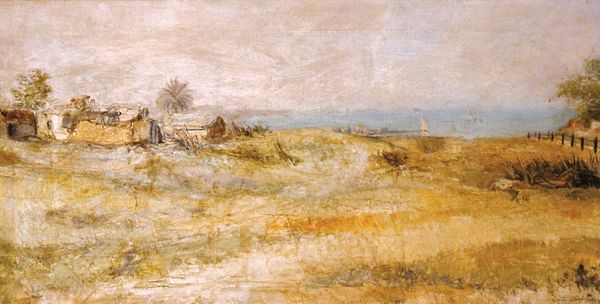
Copyright: Public domain
Curator: David Cox's "Sun, Wind, and Rain," painted in 1811. I’m struck by the dynamism. It's so evocative. Editor: It feels raw, almost unfinished. It's captivating how he suggests movement and light. Look at the visible brushwork; it feels almost rebellious for its time. Curator: Considering it was produced in the early 19th century, there's a fascinating material tension at play. We have watercolor—traditionally associated with sketches and studies—employed to capture an expansive landscape with almost tempestuous energy. This challenges preconceived notions about artistic hierarchy and production value, right? Editor: Absolutely! Think of the era’s class structures. The labor involved in producing watercolors often involved the "hobbyist" activity of the wealthy leisure class. Here, Cox, challenges notions of high art as intrinsically tied to elaborate oil paintings. Curator: Precisely. And if we shift focus, there's this incredible drama in the weather. The heavy, rain-filled sky against the distant sunlit fields, plus a figure seemingly rushing on horseback under an umbrella. How much of our reading is influenced by the identity, or presumed identity, of the fleeing person? Who gets to seek shelter, and at what cost? Editor: It's definitely suggestive. But look more at the actual production. Think of Cox heading out "plein air." Capturing a scene like this relies on direct observation and a specific kind of material engagement with nature. He’s recording something tangible about the conditions, his direct experience—rather than an idealized landscape. What were the material limitations imposed upon the artistic subject because of their gender, race, or access to materials? Curator: Yes, that is visible throughout the entire composition! We can draw contemporary comparisons with modern industrial materials and methods too; he appears to be responding to a world rapidly changed through emerging technological applications. Editor: For sure. He asks the audience to think deeply about class and identity by allowing us to contemplate his process, from concept to delivery. The relationship is visible throughout the canvas! Curator: Looking at Cox's study I realize that even within works we might superficially identify as simply scenic or even idyllic there's a profound sense of a person contending with the immediate circumstances of their world, one that reveals itself to a critical eye through an investigation of its formal and material properties. Editor: Ultimately, isn't this is the beauty of historical contextualization? Revealing the personal through historical investigation opens to more understanding of not only history but also ourselves.
Comments
No comments
Be the first to comment and join the conversation on the ultimate creative platform.
